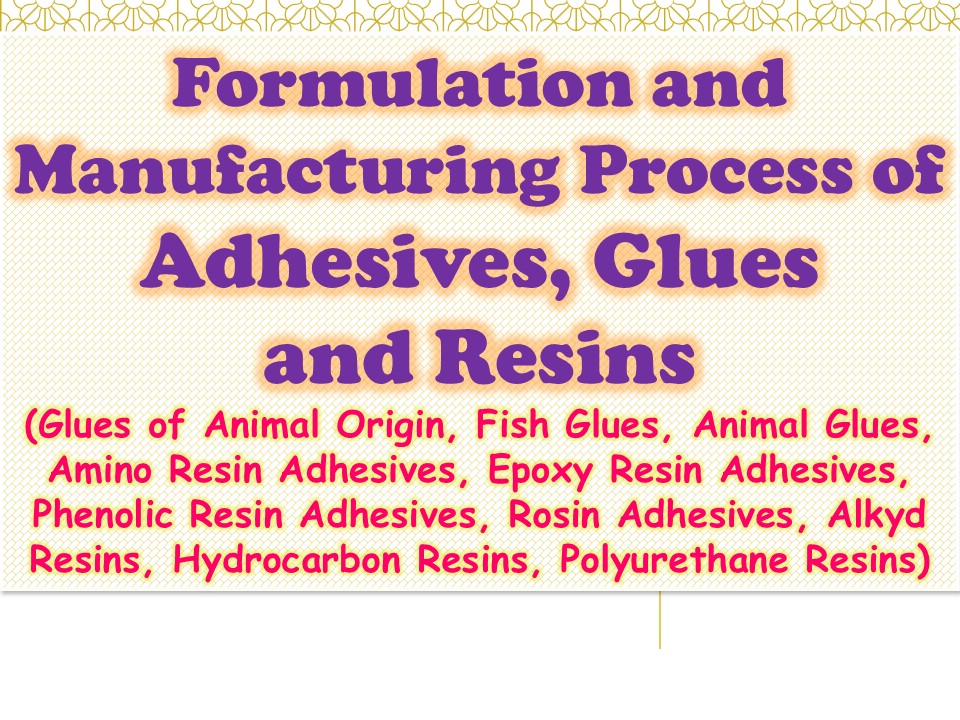
Creating strong and reliable bonds between materials has always been a key requirement across various industries. From packaging and automotive to construction and electronics, the demand for effective bonding agents continues to grow. The adhesives & resins sector plays a crucial role in meeting this demand. By understanding the formulation processes and manufacturing methods, businesses can unlock great potential in this fast-evolving market.
Introduction to Adhesives & Resins in Manufacturing
To begin with, adhesives are substances used to join surfaces together, while resins serve as essential components in adhesives or coatings. In many cases, synthetic resins act as the base of industrial adhesives. Therefore, it is important to explore both materials together. Over time, demand for advanced bonding solutions has risen, driven by developments in lightweight materials and eco-friendly applications.
See Also : Fruits & Vegetables
Furthermore, innovation in polymer science has transformed the capabilities of bonding materials. As industries adopt automation and high-speed assembly, expectations for performance, durability, and curing time have become more stringent. Consequently, specialized formulations have emerged to suit various operational needs.
Classification and Types of Adhesives
Generally, adhesives can be classified by their chemical nature or by the method used to cure them. For example:
-
Solvent-based adhesives: These use volatile organic compounds as carriers.
-
Hot-melt adhesives: Used widely in packaging, these become liquid when heated.
-
Reactive adhesives: These undergo chemical reactions during curing for high strength.
-
Pressure-sensitive adhesives (PSA): Commonly found on tapes and labels.
Likewise, depending on application and end-use, formulations are tailored for flexibility, moisture resistance, thermal stability, and bonding speed. In many scenarios, adhesives & resins are paired with fillers, plasticizers, and stabilizers to enhance properties.
Types of Resins Used in Adhesives
Resins form the backbone of many adhesives. The main resin types include:
-
Epoxy Resins: Known for excellent adhesion and chemical resistance.
-
Acrylic Resins: Provide fast setting and UV resistance.
-
Polyurethane Resins: Offer flexibility and impact resistance.
-
Phenolic Resins: Used in high-temperature applications.
-
Alkyd Resins: Common in paints and certain construction adhesives.
As a result, manufacturers carefully choose resins based on mechanical demands, environmental exposure, and bonding substrates.
Raw Materials Used in Manufacturing
Raw materials play a vital role in defining adhesive performance. Typically, the production of adhesives & resins requires:
-
Monomers and polymers: These form the base matrix.
-
Curing agents: To enable cross-linking and strength development.
-
Solvents and diluents: Help control viscosity and application behavior.
-
Additives: For color, UV resistance, fire retardancy, or enhanced adhesion.
Because different formulations call for varied material inputs, process flexibility is essential. Additionally, supply chain reliability and raw material purity affect both cost and quality.
Formulation Techniques and Processing Steps
The formulation of adhesives involves combining chemical ingredients in a controlled manner. Generally, the key steps are:
-
Weighing and charging raw materials into the mixer.
-
Heating and blending under controlled conditions.
-
Emulsification or polymerization, depending on product type.
-
Degassing or filtering to remove air or impurities.
-
Filling and packaging in suitable containers like tubes, drums, or cartridges.
Each type of adhesive has its own process nuances. For instance, solvent-based adhesives require evaporation control. Similarly, hot-melt adhesives need temperature management and thermal stability.
Because end-product consistency is essential, quality checks are integrated at various stages. These include viscosity tests, peel strength, curing time, and bond durability assessments.
Market Demand and Business Opportunities
Across global markets, the adhesives & resins industry has grown steadily. The rise of modular furniture, flexible packaging, and automotive light-weighting has boosted demand. Furthermore, sectors such as aerospace, electronics, and renewable energy are also adopting advanced bonding materials.
Additionally, construction and infrastructure sectors rely heavily on sealants, structural adhesives, and weather-resistant formulations. Therefore, setting up a manufacturing business can be highly profitable, especially when focusing on niche products with high performance requirements.
Setting Up an Adhesives & Resins Manufacturing Unit
Entrepreneurs seeking entry into this segment must consider key business aspects:
-
Location: Proximity to raw materials, industrial zones, and transport hubs is beneficial.
-
Machinery: Requires mixers, kettles, cooling tanks, reactors, and packaging equipment.
-
Utilities: Adequate power, water, and fire safety arrangements must be in place.
-
Regulatory compliance: Safety standards, environmental clearance, and chemical handling norms are mandatory.
Moreover, staff should be trained in chemical handling, quality control, and safety protocols. Since the industry involves flammable materials and emissions, proper ventilation and hazard management are necessary.
Trends Driving the Adhesives & Resins Industry
Several trends have reshaped how this industry functions. These include:
-
Bio-based adhesives: Derived from renewable sources, they reduce dependence on petroleum inputs.
-
Low-VOC and solvent-free systems: Help comply with emission norms.
-
UV-curable adhesives: Speed up production lines, especially in electronics.
-
Smart adhesives: Capable of changing properties with heat, light, or moisture.
In light of these trends, R&D investment has become vital. Companies are now collaborating with research institutes to develop next-generation products with high thermal conductivity, recyclability, or even reusability.
Challenges and Considerations in Manufacturing
Although the sector is promising, manufacturers face several challenges:
-
Raw material volatility: Prices of chemicals often fluctuate.
-
Technical complexity: Some resins require precise process conditions.
-
Product shelf life: Adhesives may degrade if stored improperly.
-
Environmental concerns: Waste disposal and emissions need monitoring.
Thus, ongoing innovation, process optimization, and regulatory compliance are essential for long-term success. Entrepreneurs must also invest in formulation flexibility to serve custom demands.
Future Potential and Global Outlook
Looking ahead, the global market for adhesives & resins is projected to expand significantly. According to market studies, Asia-Pacific remains a leading region due to growth in infrastructure and manufacturing. Moreover, as electric vehicles and energy-efficient homes gain popularity, demand for high-performance adhesives is expected to rise.
Notably, the shift toward sustainable materials opens up fresh opportunities for green formulations. Additionally, automated adhesive application systems are being developed to ensure precision, reduce waste, and improve labor efficiency.
Therefore, for manufacturers willing to adapt and innovate, the future holds exciting possibilities. Exploring export markets, focusing on R&D, and targeting high-margin sectors will provide a competitive edge.
See Also : Herbal Drugs and Plant Sources
Conclusion
In summary, the adhesives & resins industry offers vast potential across a wide range of sectors. As industries evolve and new materials emerge, the need for reliable bonding agents continues to grow. By understanding formulation techniques, investing in quality processes, and embracing innovation, businesses can succeed in this essential chemical sector. With proper planning, efficient operations, and a strong value proposition, manufacturers can carve a strong niche in the market and build a sustainable, profitable business.





